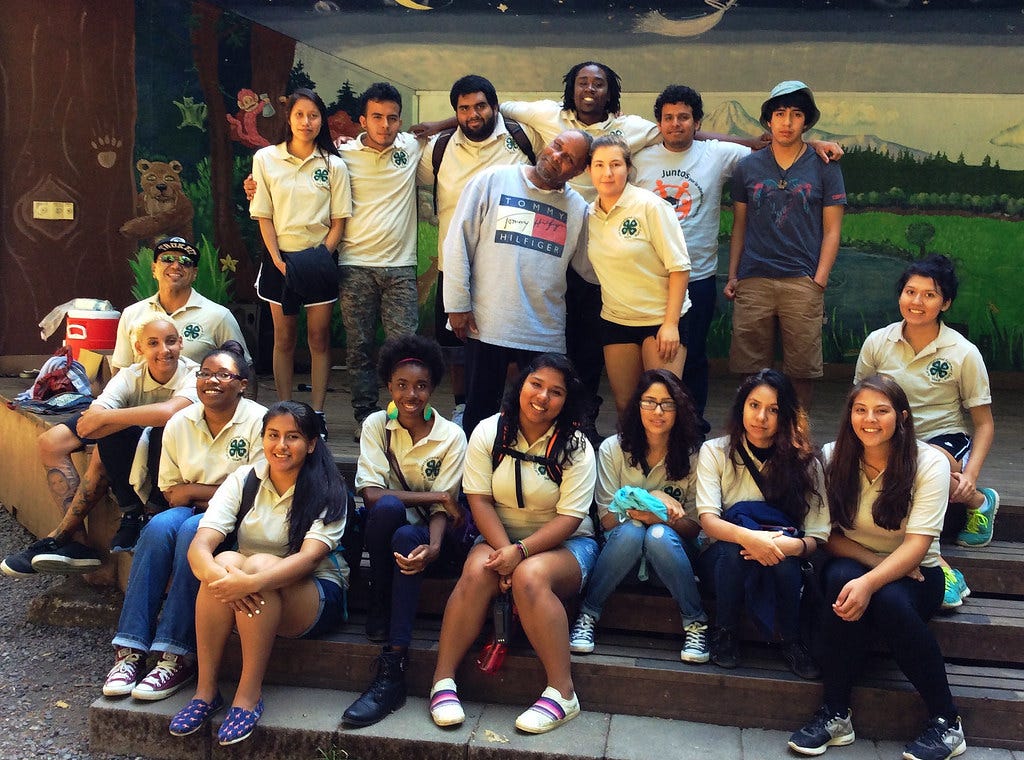How to Realize Oregon's Higher Education Goals Today
Let’s stop making higher education a “tomorrow” goal and make it happen today.
For Oregonians to achieve their full educational potential, Oregon needs to invest in higher education.[1] The pursuit of the state’s education goals are chronically underfunded because other factors block progress: The recession depleted the treasury; Legislators made the hard, but necessary choice to put a higher priority on K-12; and, wildfires and COVID-19 sucked up our financial resources as well as our political attention. We wait now in forlorn hope for a federal rescue. An influx of federal funds could turn our aspirational goals into tangible outcomes. But hope is not a plan, and we’ll never reach our goals without one.
The Consequences of Underinvestment
Oregon’s students and businesses bear the brunt of the state’s neglect of its higher education goals. Resident undergraduate tuition and fees have increased 60% since 2010. In 2020, net tuition and fee revenue per student in Oregon was 17% higher than the national average, which means our students are paying a much larger share of the total cost of their education than those in other states. The average student debt for new Oregon graduates is $34,000 ($19,200 at public universities and community colleges). Saddled with debt, graduates tend to leave Oregon to look for more lucrative opportunities. Two-thirds of UO and OSU graduates now leave the state, limiting the state’s economic growth by reducing the available workforce for our businesses.
Failing on 40/40/20
Since 2011, our statutory goal has been that, by 2025, 40% of Oregonians age 24-35 will have completed a 4-year degree, 40% of Oregonians will have completed a 2-year degree, and the remaining 20% will have at least completed high school. According to the Higher Education Coordinating Commission (HECC), “attainment remains well behind the 80% [2- or 4- year college degree] goal”; just 35% have a 4-year degree and 19% have a 2-year degree or postsecondary certificate. An astounding 20% have some college, but no postsecondary credential, making up most of the deficit in the 40/40/20 goals. Moreover, the percentage of Oregonians with any postsecondary degree or certificate has remained flat for the past four years.
The HECC notes that a primary cause is that college remains unaffordable for almost half of students who would like to enroll, even after taking into account available aid, student earnings, and expected family contribution. With the Student Success Act’s investments in K-12, we’ve got a good start on reducing the number of young adult Oregonians who lack even a high school diploma—it’s now 8.2%. But we still don’t have a solid plan to increase completion for students who enroll in college but never earn a credential.
Declining Enrollment But Improving Completion?
Despite the increasing need for a college credential, enrollment in Oregon community colleges has fallen from 350,000 to 180,000 over the last 10 years. During that period public university enrollment by Oregon residents has fallen less drastically from about 94,000 to about 77,000. On the bright side, public university 6-year completion rates for Oregon residents have trended up from about 61% to 67% over the last ten years (using freshman cohorts). At community colleges, completion and transfer rates have also improved. The percentage of new, credential-seeking students who earn a degree or certificate or who transfer to a bachelor’s degree institution within four years has risen from 44% to 53% since 2014. We’re seeing some improvement in retaining students and matriculating them, although we’re still falling far short of meeting the 40/40/20 goals.
Tuition and “Sticker Shock”
Most of the legislative efforts to help us meet the state goal lately have focused on funding more aid through the Oregon Promise Program and Oregon Opportunity Grants. From 2009-2019, underfunding the grant programs has meant that awards were given to only 16.5% of the 2 million applicants who are fully eligible for Oregon Opportunity Grants. And those grants are of very limited help; they pay just 13% of the prior year’s cost of attendance. Despite recent increases, financial aid funding remains down 5% over the last 10 years in inflation-adjusted dollars.
While better funding of our grant programs would improve student access, we must also increase funding of the higher ed programs themselves. Better funding for our community and 4-year colleges would keep tuition costs low enough to avoid scaring off potential enrollees and keep lower-income students in their programs. In inflation-adjusted dollars, state support for higher education in Oregon has fallen by 11% since 2001. To be sure, some amount of fiscal discipline should be required of the institutions receiving increased funding, but there’s no getting around the fact that we need better support for our institutions of higher learning if we want more students to attend and complete college.
Funding – Supporting Completion and Workforce Needs
Tying public university funding to completion rates and workforce needs has generated some successes, as evidenced by the increasing completion rates. The Legislature allocates a (too-small) amount to the Public University Support Fund. Public universities receive a share based not only on enrollment, but also on performance metrics that include student completion and response to workforce needs. In contrast, state support for community colleges through the Community College Support Fund is still primarily based on enrollment and local property tax base. (Public universities do not have a property tax base, but community colleges do.)
This effectively punishes community colleges for offering more-expensive programs that reflect workforce needs. Nursing is a prime example—it is program that can be done well and cost effectively at a community college, but it is expensive. The most successful technical education programs are those that are tied to apprenticeships, such as those for electricians, as much of the increased cost of instruction is borne by the industry and unions. A responsible way to increase support to community colleges would be to measure productivity—and increase funding—in relation to their success in forming industry partnerships, supporting student completion, and offering programs in areas of high community need. This maximizes both the resources available for education and post-graduation student employment.
The state doesn’t have all the answers to what will best help improve student success in public universities and community colleges, but rewarding success is one way to promote local innovation to achieve our goals. And recognizing the different ways that “success” may be defined is part of the solution.
Conclusion
With sustained effort, our public community colleges and universities are doing a better job of retaining and graduating students. We set a goal in 2011 that by 2025, our support for public education would result in having a workforce that includes 40% college graduates, 40% community college graduates, and 20% high school completers. Our public institutions have the potential to close most of the gap between our 40/40/20 goals and the current state of affairs, giving the community the workforce we need and retaining more of our young adults in Oregon. But we’ll never reach that goal without a solid plan and better funding. Let’s stop making higher education a “tomorrow” goal and make it happen today.
Marty Wilde is a State Representative, HD 11.
[1] We must also invest in secondary career and technical education, but that’s a story for another time.
Photo credit: "BLM Goes Back to School" by BLM Oregon & Washington is licensed under CC BY 2.0






Really appreciate you bringing attention back to higher ed. When I was a professor at PSU, I taught in the 1st year program. Many students struggled with the cost of college, but also with the lack of supports around academics. Many were not prepared to do college-level work because they had never read a whole book or written more than a 5-page paper.
When students leave college, it's usually during the first 2 years. Programs designed to address academic gaps exist, but they require a college to commit funding to 100 and 200 level classes. However, these are often the classes that are taught by faculty who have little institutional support and have too many students in them. Teaching 100 students in an intro to X class, does not allow a professor to give their students the skills they'll need to do well in upper-level course work.
So yes, more funding is needed that directly goes to higher ed institutions, but that funding also needs to be used to build up a faculty and wrap-around supports that can address the academic side of college.
Thanks for this post.
I particularly appreciate your policy prescriptions for community colleges -- long overdue.
But, as a former chair of the HECC and, before then, one of the architects of the Oregon Opportunity Grant program, I've come to the conclusion that our 40-40 goals, especially in regard to the 4-year college goal, have neglected to take into full account the cost to Oregon families for achieving that goal. When you add it up, over the past decade and through the next, that cost will be beyond what's feasible for most Oregonians, even with major Increases in funding for need-based financial aid.
Quick numbers for the current in-state higher ed population of Oregon students: 77,000 X $15,000 (if we could get to that average net cost) X 20 years = $23 billion. What percentage of family income does that represent over two decades? I'll have to dig deeper to come up with that number. Whatever it is, it's a bigger ask of our working families than it is of state taxpayers. Which highlights the problem you've addressed here.
But I would add another item to what's needed to address this, beyond more funds for financial aid and institutional support: Find ways to control and eventually reduce the cost of a four-year college education. Invest more in online learning and move from the residential model of a full four years on campus, where for many college students the cost of living (in housing and meals) is greater than the cost of learning, to a hybrid model of perhaps two years on campus and two years of learning online or in closer-to-home community college settings. Something has to be done to control costs beyond increasing funding to keep up with those costs.